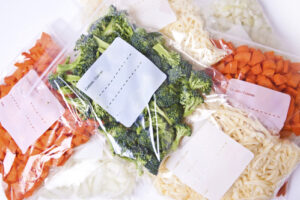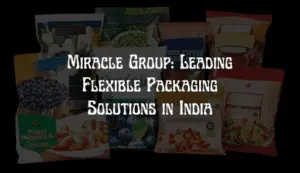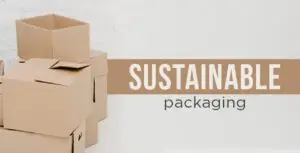Food waste is a major problem around the world. According to the Food and Agriculture Organization of the United Nations (FAO), one-third of all food produced for human consumption is wasted annually. This amounts to approximately 1.3 billion tons of food, which has a significant environmental impact.
One of the main contributors to food waste is packaging. Packaging can help to protect food from world 777 spoilage and contamination. But it can also add unnecessary weight and volume, which can make it difficult to transport and store food. This can lead to food being wasted due to spoilage or damage.
Flexible packaging is a type of packaging that is made from lightweight, pliable materials such as plastic film, paper, and foil. It is often used for food packaging because it is relatively inexpensive, easy to use, and can be customized to fit a variety of products.
Benefits of Flexible Packaging:
- It is lightweight and compact, which makes it easier to transport and store food.
- It is flexible, which allows it to be adapted to a variety of products.
- It is often recyclable or compostable, which reduces its environmental impact.
- It can be used to create smaller packaging sizes, which can help to reduce food waste by encouraging consumers to buy only what they need.
- It can be used to create resealable packaging, which can help to keep food fresh for longer.
Ways to reduce food waste with Flexible packaging
| S.No. | Solution | Details |
| 1 |
Protective Packaging |
Flexible packaging, with its superior barrier properties, provides a protective shield against external elements such as moisture, light, and oxygen that can accelerate food spoilage. By creating a controlled environment, flexible packaging helps extend the shelf lifeof food by protecting it from spoilage and contamination. |
| 2 |
Portion Control and Extended Usability |
It can help to reduce the amount of food that is wasted by consumers who buy more than they need. With single-serve options, consumers can enjoy the desired quantity without worrying about over-purchasing or the risk of wastage. Moreover, flexible packaging is often designed to be resealable, allowing consumers to use the product gradually over time, preserving its freshness and avoiding unnecessary waste. |
| 3 |
Improved Portability and Convenience |
One of the standout features of flexible packaging is its lightweight and portable nature. Compared to traditional rigid packaging, such as glass or metal, flexible packaging is significantly lighter, making it easier to transport and handle. This advantage leads to reduced transportation costs, lower carbon emissions, and a more efficient supply chain. Additionally, the flexible nature of the packaging allows for easy storage and space optimization, making it ideal for both retail shelves and consumer pantries. |
| 4 |
Optimal Product Protection |
Food waste often occurs due to inadequate protection during transportation and storage. Flexible packaging addresses this issue by incorporating innovative designs that safeguard the product integrity. For instance, resealable pouches prevent air exposure and moisture ingress, keeping the contents fresh and preventing spoilage. |
| 5 |
Sustainable Material Choices: |
Flexible packaging has made significant strides in sustainable material choices, with many manufacturers opting for recyclable, compostable, or biodegradable options. By selecting these materials, the packaging industry aims to reduce its ecological footprint while ensuring food safety and preservation. |
| 6 |
Increased Product Visibility and Information: |
Transparent and flexible packaging allows consumers to visually inspect the product before purchasing, giving them confidence in its quality and freshness. Additionally, manufacturers can incorporate labels and graphics on the packaging, providing essential information. Such as expiration dates, nutritional facts, and storage instructions. This transparency not only aids consumers in making informed choices but also reduces the likelihood of food being discarded due to misconceptions or doubts about its condition. |
A study by the Ellen MacArthur Foundation found that flexible packaging could help to reduce food waste by up to 20%.
Conclusion
Flexible packaging is revolutionizing the food industry by offering a range of benefits that directly contribute to reducing food waste. It is lightweight, compact, recyclable, and can be used to create smaller packaging sizes. Flexible packaging can help to extend the shelf life of food, reduce food damage during transportation and storage, and reduce the amount of food that is wasted by consumers and businesses.
By using flexible packaging, businesses can help to reduce their environmental impact and contribute to a more sustainable future.
So, the next time you come across a product in flexible packaging, ask yourself, “Am I supporting a greener future while enjoying the benefits of fresher, more convenient food?” The answer is a resounding “yes!”





